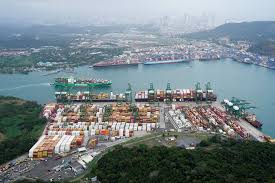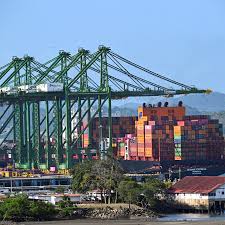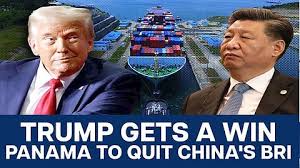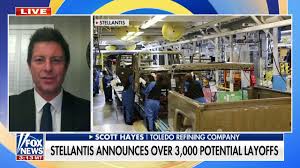If you’ve ever wondered how the infrastructure projects linking China, the U.S., and Panama shape global trade and diplomacy, you’re in the right place. “China US Panama infrastructure” refers to the network of critical projects—from ports to energy systems—where these three nations intersect, blending economic ambition, strategic geography, and geopolitical rivalry. This article unpacks why Panama’s infrastructure matters, how China and the U.S. are involved, and what it means for the world. Let’s start with the basics.
1. Why Panama’s Infrastructure Matters: Strategic Geography and Global Trade

Panama’s infrastructure isn’t just about roads or bridges—it’s a lifeline for global commerce. Its location, straddling the Atlantic and Pacific Oceans, makes it an irreplaceable hub for international trade.
1.1 The Panama Canal: The World’s Most Critical Shipping Shortcut
The Panama Canal, a 52-mile waterway cutting through Panama’s isthmus, is the crown jewel of its infrastructure. Completed by the U.S. in 1914, it revolutionized shipping by connecting the two oceans, eliminating the need for ships to sail around Cape Horn (a 13,000-mile detour). Today, the canal handles ~6% of global trade (over 12,000 ships annually), with 80% of its traffic linked to U.S. or Asian ports. For China, the canal is vital: it’s the primary route for goods bound to the U.S. West Coast, like electronics, furniture, and machinery. For the U.S., it’s equally critical—95% of U.S. maritime trade with Asia passes through the canal.
Key Stats (2023):
- Annual revenue: $3.5 billion (largely from tolls).
- Average daily ship transits: 35–40 (including 15% Neopanamax ships, the largest vessels the expanded canal can handle).
- Economic impact: The canal contributes 5% to Panama’s GDP and supports 300,000 jobs (direct and indirect).
Without the canal, shipping costs between East Asia and the U.S. West Coast could surge by $10 billion annually (World Bank estimate), delaying goods and raising prices for consumers.
1.2 Beyond the Canal: Panama’s Role as a Logistics Hub
Panama’s infrastructure extends far beyond the canal, solidifying its status as a “crossroads of the Americas”:
- Ports: The Port of Balboa (Pacific) and Port of Cristóbal (Atlantic) are among Latin America’s busiest, handling 4 million TEU (twenty-foot equivalent units) of cargo yearly. They serve landlocked nations like Bolivia and Ecuador, acting as their gateway to global markets.
- Free Trade Zones (FTZs): Panama has over 50 FTZs, including the iconic Colón FTZ—one of the largest in the world. These zones attract giants like Cargill and Maersk, turning Panama into a distribution hub for goods across North and South America.
- Air and Ground Networks: Tocumen International Airport (Panama City’s main airport) handles 7 million passengers annually and is a cargo hub for FedEx and DHL. The Trans-Panama Highway, linking the Atlantic and Pacific coasts, carries 80% of the country’s road freight, connecting ports to inland industries.
For China and the U.S., investing in Panama’s infrastructure isn’t just about charity—it’s about securing access to these networks. A well-functioning port or metro system means smoother trade flows, faster delivery, and stronger economic ties.
2. China’s Footprint in Panama’s Infrastructure: Investments and the BRI
China’s push into global infrastructure, driven by the Belt and Road Initiative (BRI), has made it a major player in Panama. Launched in 2013, the BRI aims to connect Asia with Europe and Africa via roads, ports, and energy projects—Panama is a key node in this plan.
2.1 China’s Strategic Interests in Panama
China is Panama’s second-largest trading partner (after the U.S.), with bilateral trade hitting $10.2 billion in 2023. Infrastructure investments align with three core goals:
- Trade Efficiency: Upgrading ports and roads ensures Chinese goods flow quickly to U.S. markets, reducing costs.
- Soft Power: Strengthening diplomatic ties (China and Panama re-established relations in 2017) through visible development projects.
- Regional Influence: Countering U.S. dominance in Latin America, where the U.S. has historically held strong economic and political sway.
2.2 Notable China-Panama Infrastructure Projects
China’s involvement spans sectors, from maritime to public transit. Here’s a breakdown of key projects:
| Project | Sector | China’s Role | Status | Impact |
|---|---|---|---|---|
| Panama Canal Expansion (2016) | Maritime | Supplied dredging equipment (e.g., 10 large suction dredgers) via China South Industries Group. | Completed | Doubled canal capacity; now handles ships up to 14,000 TEU (Neopanamax). |
| Port of Colón Modernization | Logistics | Contractors: China Harbour Engineering Company (CHEC), China Communications Construction Company (CCCC). | Ongoing (2023–2027) | Aims to boost annual capacity from 1.5 million to 3 million TEU; could triple local port revenue. |
| Panama Metro Line 1 | Public Transit | Financed 80% of $2.8 billion cost via China Export-Import Bank (EXIM) export credit loans. | Operational (2022) | Reduced commute times in Panama City from 2 hours to 30 minutes; cut emissions by 15% (ACP report). |
| Solar Farms (Proposed) | Energy | Investors: LONGi (solar panels), Chinese state-backed funds. | Proposed (2024) | Could power 50% of Panama’s electricity by 2030; reduce reliance on fossil fuels. |
Case Study: Metro Line 1
Panama City’s Metro Line 1, funded mostly by China, was a game-changer for commuters. Before its launch, traffic jams cost the city $1.2 billion annually in lost productivity (World Bank). Post-operation, ridership hit 300,000 daily, easing congestion and lowering pollution. Local mayor, Raul Castro, noted: “This project wasn’t just about trains—it was about giving Panamanians back their time.”
2.3 China’s Approach: Infrastructure as a Diplomatic Tool
China frames its investments as “win-win”: Panama gets upgraded infrastructure, while China gains trade access and regional clout. However, critics (including U.S. officials) warn of debt-trap diplomacy, where loans with high interest rates could force Panama to hand over strategic assets (like the canal) if repayment is delayed. Panama’s government dismisses these claims, stating all BRI projects are “transparent” and tied to revenue-generating assets. As Finance Minister Ivan Samper, said in 2024: “Chinese loans are backed by our port and canal revenues, which are stable. We’re not risking sovereignty—we’re investing in our future.”
3. The U.S. and Panama Infrastructure: A Legacy of Control and Modern Partnerships
The U.S. has a long history with Panama’s infrastructure, starting with the canal’s construction. Even after handing over control, its influence endures.
3.1 Historical U.S. Involvement: From Construction to Handover
The U.S. Army Corps of Engineers built the Panama Canal between 1904–1914, overcoming engineering and health challenges (e.g., malaria outbreaks). Under the Hay-Bunau-Varilla Treaty (1903), the U.S. controlled the canal and a 500-square-mile Canal Zone. Tensions grew as Panama sought sovereignty, leading to the Torrijos-Carter Treaties (1977), which phased out U.S. control. By 1999, the canal was fully transferred to Panama’s Panama Canal Authority (ACP).
This legacy shapes today’s dynamics:
- Many U.S. firms (e.g., Bechtel, Lockheed Martin) still maintain contracts for canal operations, like maintaining locks and navigation systems.
- The U.S. views the canal as a strategic asset, critical to its naval fleet’s movement (e.g., deploying ships from the Pacific to the Atlantic) and commercial trade.
3.2 U.S. Investments in Panama’s Infrastructure Today
While less visible than China’s BRI, the U.S. supports Panama through multiple channels:
- USAID Programs: The U.S. Agency for International Development funds projects like “Sustainable Ports” (2022–2025), which aims to reduce carbon emissions at the Port of Balboa by 20%.
- Private Sector Partnerships: U.S. companies like Cargill (agricultural logistics) and Maersk (shipping) invest in Panama’s FTZs and ports, bringing tech and management expertise.
- Security Collaborations: The U.S. military partners with Panama’s forces under the Panama Canal Treaty to protect infrastructure from cyber threats and physical attacks. In 2023, they co-hosted drills to secure canal operations against hypothetical sabotage.
Example: USAID’s Border Infrastructure Grant
In 2022, USAID awarded Panama $15 million to upgrade border crossings with Costa Rica. The project focused on digital customs systems, reducing wait times from 8 hours to 2 hours. ACP Director Jorge Quijano praised the effort: “This isn’t just about roads—it’s about integrating Panama into faster, more efficient regional trade.”
3.3 U.S. Concerns About Chinese Influence
The U.S. closely monitors China’s infrastructure push in Panama, driven by fears of losing regional leverage. Key worries include:
- Strategic Control: Could China use investments to gain influence over the canal? Panama insists it retains full sovereignty, but U.S. officials note that Chinese contractors often include clauses for “operational oversight” in BRI deals.
- Economic Dependence: Over-reliance on Chinese loans might limit Panama’s ability to align with U.S.-led initiatives, like the Partnership for Prosperity (a U.S. program to boost Latin American economies).
- Tech Security: Chinese firms involved in Panama’s tech projects (e.g., 5G, smart port systems) could install backdoors, according to a 2023 U.S. State Department report.
These concerns have spurred the U.S. to increase its own investments. In 2024, the U.S. Development Finance Corporation (DFC) announced $500 million in grants for Panama’s renewable energy projects, directly countering China’s BRI offers.
4. Collaboration vs. Competition: How China, U.S., and Panama Interact

Panama’s infrastructure projects often see China, the U.S., and Panama working together—or competing. The dynamics shift based on project goals and national priorities.
4.1 Joint Projects: Rare but Impactful
While rivalry dominates, collaboration isn’t unheard of. For example:
- Canal Authority Training Programs: The ACP partners with U.S. universities (MIT) and Chinese tech firms (Huawei) to train engineers in AI-driven traffic management. The goal: reduce transit delays using real-time data analysis.
- Climate Resilience Initiatives: A 2023 ACP project, funded by both China ($20 million) and the U.S. ($15 million), aims to reinforce canal locks against rising sea levels and extreme weather. This aligns with Panama’s pledge to cut emissions by 30% by 2030.
4.2 Competition: Bidding Wars and Soft Power Rivalries
More often, China and the U.S. compete for Panama’s contracts, driving up project quality and lowering costs.
Example 1: Port of Balboa Expansion (2021)
The Port of Balboa (Pacific) needed a $1 billion expansion to handle larger ships. Bids came from:
- China Communications Construction Company (CCCC): Offered to build the terminal in 24 months with a 5% profit margin.
- U.S. Fluor Corporation: Proposed a 36-month timeline but with advanced automation tech (reducing long-term labor costs).
Panama chose CCCC, citing its ability to deliver quickly without compromising safety. ACP’s decision highlighted Panama’s preference for speed in critical projects.
Example 2: Renewable Energy Projects
Panama’s goal to generate 70% of electricity from renewables by 2030 has drawn bids from both nations. China’s Goldwind (wind turbines) and U.S. NextEra Energy (solar) are competing for a $1 billion wind farm contract. The government is evaluating which offer provides better tech transfer and job training for locals.
4.3 Panama’s Stance: Pragmatic Neutrality
Panama’s government emphasizes “pragmatic neutrality,” choosing partners based on project value, not geopolitics. As President Laurentino Cortizo stated in 2024: “We welcome investments from China, the U.S., and any nation that helps us grow. Our priority is development, not taking sides.”
This approach keeps both nations engaged but also means Panama can play them off against each other, securing better terms.
5. Key Infrastructure Projects: China, U.S., and Panama in Action
Let’s zoom in on four major projects that epitomize “China US Panama infrastructure” dynamics.
5.1 Panama Canal Expansion (2016)
Though funded primarily by Panama ($5.25 billion), the 2016 expansion relied on global partners:
- Chinese Contribution: China South Industries Group supplied 10 dredging vessels, removing 150 million cubic meters of earth—critical for widening the canal’s locks.
- U.S. Expertise: AECOM, a U.S.-based engineering firm, advised on lock design and water management, ensuring the expansion didn’t disrupt traffic.
Outcome: The canal now handles Neopanamax ships, boosting annual revenue by $800 million (ACP 2023 report).
5.2 Panama Metro Line 1
Panama’s first metro line, costing $2.8 billion, was a landmark project:
- China’s Role: EXIM Bank provided $2.3 billion in loans, covering 80% of costs. Construction was led by China Railway Engineering Corporation (CREC).
- U.S. Involvement: Signal systems and safety certifications came from Thales (U.S.) and Siemens, ensuring compliance with global transit standards.
Impact: Reduced commute times, cut traffic congestion, and lower emissions. A 2023 survey found 75% of users felt safer and more productive due to the metro.
5.3 Port of Colón Modernization
The Port of Colón, Panama’s main Atlantic port, is undergoing a $4 billion upgrade.
- Chinese Contractors: CCCC and Sinohydro are leading dredging (deepening the harbor) and terminal construction. Their bid promised a 30-month timeline, 5 months faster than U.S. competitors.
- U.S. Concerns: In 2023, the U.S. Senate passed a non-binding resolution urging Panama to audit Chinese contracts, citing “potential hidden fees.”
Current Status: Phase 1 (new container terminal) is 60% complete; expected to boost port capacity by 40% by 2025.
5.4 Renewable Energy Partnerships
Panama’s push for renewables has sparked a new front in the China-U.S. competition:
- China’s Offer: Goldwind proposes a 500 MW wind farm, with $1 billion in financing via BRI. They also offer to train 500 local engineers in wind turbine maintenance.
- U.S. Counterproposal: NextEra Energy offers a 300 MW solar farm, funded by DFC grants ($500 million), with free tech training for 200 locals.
Panama’s Decision: As of 2024, the government is leaning toward the solar proposal, prioritizing lower long-term operational costs and stronger tech transfer.
6. Economic and Geopolitical Implications of China US Panama Infrastructure Projects

These projects have far-reaching effects, beyond Panama’s borders.
6.1 Economic Benefits for Panama
- Job Creation: The Port of Colón upgrade alone will create 5,000+ construction jobs and 20,000+ permanent roles (e.g., port managers, technicians).
- GDP Growth: Infrastructure investments contribute ~3% to Panama’s annual GDP (Central Bank of Panama, 2023). This is projected to rise to 4% by 2027 as more projects come online.
- Trade Diversification: Upgraded FTZs and roads reduce Panama’s reliance on the canal, spreading economic benefits to regions like Colón (a historically poor area).
6.2 Geopolitical Implications for China and the U.S.
- China: Gaining a foothold in Panama strengthens the BRI’s reach in the Western Hemisphere, challenging U.S. influence. By 2023, China had secured 12 major infrastructure contracts in Panama, doubling its 2017 count.
- U.S.: Countering China’s BRI is part of its “Indo-Pacific Strategy,” but critics argue the U.S. is underinvesting. A 2024 report by the Center for Strategic and International Studies (CSIS) noted: “The U.S. needs to match China’s financing speed and scale to remain competitive in Panama.”
6.3 Global Trade Stability
Smooth cooperation between China, the U.S., and Panama keeps global supply chains running. For instance:
- If the canal were disrupted, shipping costs between Asia and the U.S. West Coast could jump by $10 billion/year (World Bank). This would hit industries like electronics (Apple, Samsung) and retail (Walmart) hardest.
- China’s investments in Panama’s ports ensure its $600 billion/year export to the U.S. remains efficient, while U.S. tech transfers help Panama adopt greener logistics.
7. Challenges and Controversies: Environmental, Financial, and Political Risks
No large infrastructure project is without controversy. Let’s explore the risks tied to “China US Panama infrastructure” efforts.
7.1 Environmental Concerns
Critics argue that rapid infrastructure development is harming Panama’s ecosystems:
- Canal Expansion Impact: Widening locks increased freshwater consumption from lakes, threatening Panama’s drinking water supply and river ecosystems (Panama Environmental Association, 2022).
- Port Dredging: Chinese-led dredging at Colón has stirred concerns about coral reef damage and marine life disruption. Local activists filed a 2023 lawsuit, claiming dredging violated environmental laws.
ACP Response: “We’re implementing strict mitigation measures, like reforestation and coral relocation, to protect our environment. Sustainability is a core part of all projects.”
7.2 Debt Sustainability Worries
China’s loans often require Panama to pledge assets (e.g., port revenue) as collateral. While Panama’s debt-to-GDP ratio is 52% (2023)—well below Latin America’s average (60%)—some experts fear over-reliance. Economist Ana Gonzalez of the Inter-American Development Bank (IDB) warns: “If Panama’s infrastructure projects face delays, loan repayments could strain public finances. Diversifying funding sources is key.”
7.3 Labor and Corruption Allegations
- Chinese Projects: Local workers allege that Chinese contractors prioritize hiring their own citizens over Panamanians. In 2022, protests erupted at the Metro Line 1 site, demanding 70% local employment. The ACP later enforced this rule, with penalties for non-compliance.
- Bidding Process: U.S. firms accuse Panama of favoring Chinese contractors in tenders, citing “unfair advantages” like state-backed financing. In 2023, Fluor Corporation (U.S.) challenged a CCCC win in court, claiming the bid was undervalued. The case is still pending.
8. Future Outlook: What’s Next for China US Panama Infrastructure?
Panama’s infrastructure pipeline suggests continued engagement from both China and the U.S.
8.1 Panama’s 2024–2030 Infrastructure Plan
The government’s $15 billion plan focuses on:
- Canal Zone Development: Building industrial parks and tech hubs to attract manufacturing (e.g., automotive, medical devices). These zones aim to create 50,000+ jobs by 2030.
- Trans-Panama Highway Expansion: Upgrading the highway with EV charging stations and wider lanes to handle 2 million vehicles/year by 2028 (up from 1.2 million in 2023).
- Airports Modernization: Expanding Tocumen International Airport’s runway and terminal to handle 10 million passengers/year (up from 7 million in 2023), boosting tourism and cargo.
8.2 China’s Expected Moves
China will likely double down on BRI projects in Panama:
- Renewable Energy: Bidding on solar/wind farms, leveraging its expertise in affordable, rapid construction.
- Tech Partnerships: Offering 5G infrastructure and smart city solutions (e.g., traffic management systems) to deepen digital ties.
8.3 U.S. Strategies to Stay Competitive
To counter China, the U.S. is ramping up efforts:
- Increased Funding: DFC may offer more grants (e.g., $2 billion for green projects) to reduce Panama’s need for Chinese loans.
- Public-Private Partnerships (PPPs): Encouraging U.S. firms (Caterpillar, GE) to invest in projects alongside the government, combining private innovation with public oversight.
8.4 Panama’s Balancing Act
Panama will continue prioritizing projects that align with its development goals, regardless of the investor. However, rising U.S. pressure may push it to demand stricter transparency from Chinese deals. As President Cortizo noted: “We value our partnerships with both China and the U.S. But Panama’s interests come first. We’ll choose projects that grow our economy without compromising sovereignty.”
9. FAQs About China US Panama Infrastructure
Q: What is the Panama Canal’s role in China-U.S. trade?
A: The canal is critical! It shortens shipping routes between Chinese factories and U.S. West Coast ports by ~8,000 nautical miles, cutting costs by 30% and reducing carbon emissions.
Q: How much has China invested in Panama’s infrastructure?
A: Since 2017, China has committed over $5 billion to projects like the metro, ports, and renewable energy (Panama Ministry of Economy, 2024).
Q: Does the U.S. still control the Panama Canal?
A: No. The canal was fully transferred to Panama in 1999 under the Torrijos-Carter Treaties. The U.S. maintains a military presence in Panama but has no operational control.
Q: Why do China and the U.S. compete for infrastructure projects in Panama?
A: Both see Panama as a key logistics hub. Controlling or influencing its infrastructure secures trade routes, enhances soft power, and counters the other’s regional influence.
Q: Has Panama faced debt issues from Chinese investments?
A: Panama’s debt remains manageable. Its debt-to-GDP ratio is 52% (2023), and loans are tied to revenue-generating assets (e.g., ports). The government insists no assets are at risk of being seized.
Q: What infrastructure projects are expected in Panama’s next decade?
A: Key plans include expanding the Canal Zone’s industrial parks, upgrading the Trans-Panama Highway with EV infrastructure, and modernizing Tocumen International Airport (Panama’s 2024–2030 Infrastructure Strategy).
10. Conclusion: The Complex Tapestry of China US Panama Infrastructure

“China US Panama infrastructure” is a story of global trade, strategic rivalry, and a small nation’s ambition. China brings financing and construction muscle, the U.S. offers historical ties and tech innovation, and Panama navigates both to modernize its critical assets.
While challenges like environmental impact and debt risks persist, the collaboration (and competition) between these three nations underscores Panama’s importance as a global crossroads. For readers, understanding this dynamic reveals how infrastructure investments shape international relations—and why Panama’s projects matter to trade, diplomacy, and sustainability worldwide.
As Panama builds its future, so too will the roles of China and the U.S. evolve. One thing is clear: this tiny nation’s canals, ports, and roads will remain at the heart of global commerce—and geopolitics—for decades to come.



